Pick guns are essential tools in a locksmith’s toolkit, providing unparalleled efficiency and precision in lock picking. These devices, available in manual and electric versions, leverage kinetic energy to manipulate lock pins for swift, non-destructive entry. Recognized brands like Life LockAid and Majestic offer durable, quality pick guns suitable for common locks like Quickset and Schlage. Key to their effective use is proper tension adjustment and coordination between the trigger and tension wrench. Understanding the intricacies of pick gun mechanics and usage can greatly enhance locksmithing skills, opening up advanced techniques and applications. Discover detailed insights and elevate your expertise.
Introduction
Lock pick guns have become indispensable tools for modern locksmiths, enabling the rapid and efficient opening of various lock types. Their ability to manipulate the pins in keyways like Quickset and Schlage without the need for twisting or turning sets them apart as a quick solution for stubborn locks. Understanding the mechanics, proper tension adjustment, and the benefits of quality brands such as Life LockAid and Majestic is essential for maximizing their effectiveness and longevity.
Overview of Pick Guns
Often regarded as indispensable tools in a locksmith’s arsenal, pick guns provide an efficient and reliable method for swiftly opening various types of locks by dynamically manipulating the internal pins. These tools are particularly effective with commonly encountered keyways, such as those found in Quickset and Schlage locks. High-quality pick guns from reputable brands like Life LockAid and Majestic offer enhanced durability and reliability, ensuring long-term use and dependable performance. A critical aspect of using pick guns successfully is mastering tension adjustment, which allows for the precise manipulation of lock pins. By offering a quick and efficient solution for accessing common lock types, pick guns stand as a valuable asset for professional locksmiths seeking to optimize their service delivery.
Importance in Locksmithing
Given their efficiency and reliability, pick guns have become indispensable in the locksmithing profession, epitomizing the blend of skill and technology required for quick, non-destructive entry methods. These tools are particularly essential for opening pin tumbler locks, such as Quickset and Schlage, without causing damage. By utilizing vibrations or kinetic energy to manipulate lock pins, pick guns offer a swift and effective solution for various locksmithing tasks. The precision and speed they provide are unmatched, making them a favored choice among professionals. However, the success of using pick guns heavily depends on proper tension adjustment, underscoring the need for a practiced hand and keen understanding of the tool’s mechanics.
Understanding Pick Guns
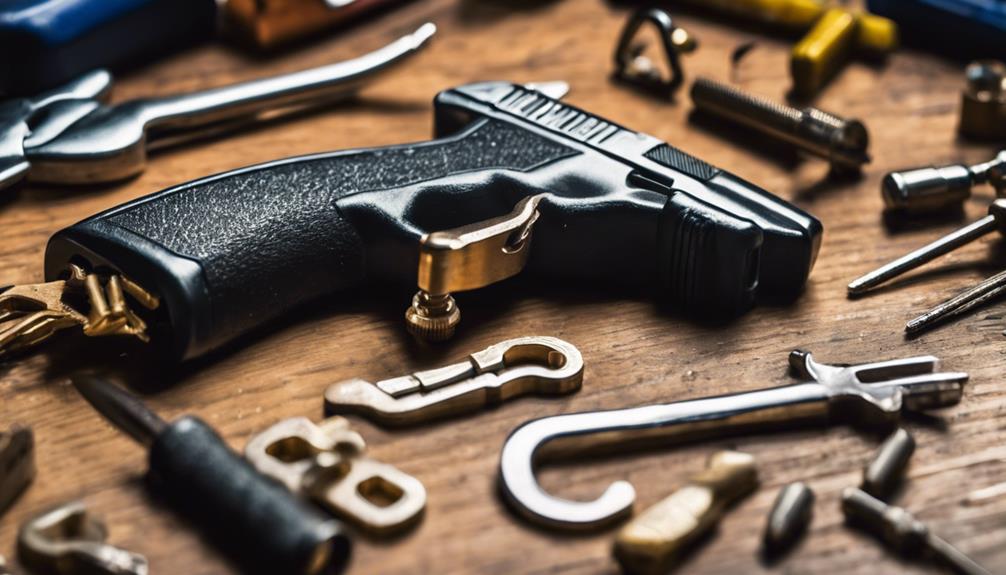
Understanding pick guns begins with examining their fundamental mechanics and historical development. These tools have evolved considerably, offering both manual and electric options to suit various locksmithing needs. By exploring their types and functionalities, one can appreciate how pick guns efficiently manipulate lock pins and accommodate different security levels.
What is a Pick Gun?
A pick gun is a specialized locksmith tool that leverages kinetic energy to rapidly align the pins within a pin tumbler lock, enabling swift and non-destructive entry. This remarkable device mimics the action of a key turning in the lock, providing an efficient solution for professionals needing quick access. Particularly effective on standard pin tumbler locks such as Quickset or Schlage, pick guns are prized for their ability to simplify and expedite the lock picking process. While not universally applicable to all lock types, mastering the use of a pick gun offers locksmiths a significant advantage. Its design guarantees minimal damage to the lock, preserving its integrity while facilitating prompt entry—a critical asset in the locksmith’s toolkit.
History and Evolution of Pick Guns
The history and evolution of pick guns reflect a fascinating journey of innovation and refinement, tracing back to their inception in the early 1900s and advancing through notable technological milestones. The first patent for a lock pick gun was filed in 1920 by Frank E. Best, showcasing the early development of this tool. Initially gaining popularity for their efficiency in opening pin tumbler locks, pick guns quickly became indispensable within the locksmithing community. Over the decades, these tools have evolved from rudimentary manual devices into sophisticated instruments, leading to the creation of modern electric versions. This progression has resulted in more precise and versatile pick guns, enhancing the speed and accuracy of lock picking tasks for professionals.
Types of Pick Guns: Manual vs. Electric
In the domain of locksmithing, discerning the distinctions between manual and electric pick guns is essential for optimizing efficiency and precision in lock picking tasks. Manual pick guns demand physical manipulation, granting the user meticulous control over the picking process, which is invaluable for intricate locks. Conversely, electric pick guns leverage battery-powered mechanisms to deliver rapid and efficient lock picking, making them ideal for locksmiths who prioritize speed in emergency scenarios. The choice between manual and electric models hinges on the specific requirements of the task at hand, with a thorough understanding of their differences enabling locksmiths to select the most appropriate tool, thereby enhancing their efficacy and success in the field.
How Pick Guns Work

In order to understand how pick guns work, it is crucial to explore the mechanics behind their operation, including the use of kinetic energy to manipulate lock pins. By comparing pick guns to traditional picking tools, we can appreciate their efficiency and effectiveness in various lock-picking scenarios. Additionally, examining the key components, such as the trigger and tension wrench, highlights the precision and skill required for successful use.
The Mechanism Behind Pick Guns
Harnessing the power of kinetic energy, pick guns revolutionize the process of lock picking by rapidly displacing lock pins within the cylinder. When the trigger is pulled, the needle or pick inside the gun delivers a sharp, controlled impact to the lock pins. This sudden burst of energy causes the pins to momentarily jump, creating a brief window where the lock can be turned and opened. Integral components such as the handle, trigger, tension wrench, and needle work harmoniously to mimic the precision of manual lock picking but with enhanced speed and efficiency. This ingenious mechanism transforms the traditionally labor-intensive task into a swift, reliable operation, making pick guns indispensable tools for skilled locksmiths.
Comparing Pick Guns to Traditional Picking Tools
Contrasting the swift efficiency of pick guns with the meticulous precision of traditional lock picking tools reveals distinct advantages and challenges inherent to each method. Pick guns leverage kinetic energy to rapidly bounce lock pins into place, enabling quick access to pin tumbler locks with standard keyways. This method eliminates the need for manual manipulation of each pin, making it ideal for locksmiths seeking rapid results without extensive training. On the other hand, traditional tools like lock picks and tension wrenches offer unparalleled precision, allowing skilled practitioners to tackle a wider variety of locks with nuanced control. While pick guns provide speed and simplicity, traditional tools demand and reward skill, offering a more versatile approach to intricate lock mechanisms.
Key Components of a Pick Gun
Understanding the key components of a pick gun is fundamental for grasping how these tools achieve their rapid and effective lock-picking capabilities. Central to its function is the needle or pick, which strikes the bottom pins in a lock, causing them to jump momentarily, aligning with the shear line to open. The tension wrench is another critical part, meticulously controlling the applied pressure essential for successful picking. By mimicking the action of a key turning, pick guns adeptly handle pin tumbler locks, though they may not suit all keyways. Mastery of these components and their mechanics is indispensable for efficient and effective lock-picking operations, making them an invaluable asset in a locksmith’s toolkit.
Choosing the Right Pick Gun
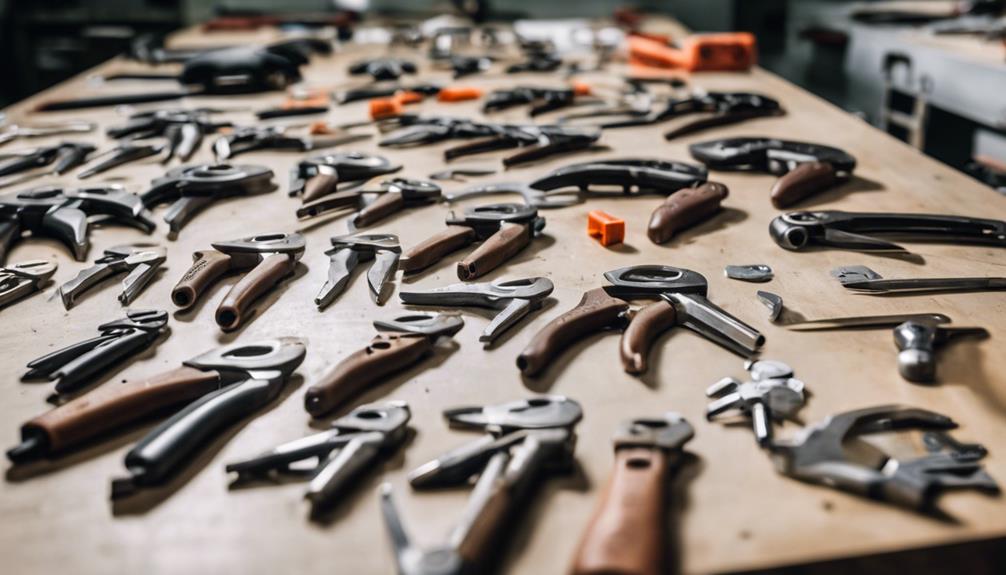
When choosing the right pick gun, it is crucial to consider factors such as brand reputation, build quality, and the availability of tension adjustments for various lock mechanisms. Brands like Life LockAid and Majestic are highly recommended for their durable and high-performance models, which stand out in the market. By comparing price points and features, locksmiths can find a pick gun that offers the best balance of efficiency and longevity.
Factors to Consider When Selecting a Pick Gun
Choosing the correct pick gun necessitates a thorough understanding of various factors to guarantee peak performance and reliability in lock picking tasks. First, consider the type of lock you will be working on, as different pick guns are tailored for specific keyways. Opt for models featuring adjustable tension settings to cater to various lock mechanisms. Prioritize pick guns from reputable manufacturers, ensuring durability and long-term reliability. Additionally, check for the availability of spare needles or blades to extend the tool’s usability. Finally, evaluate the ergonomics and ease of use to make sure comfortable handling during extended picking sessions. These considerations combined will empower you to select a pick gun that seamlessly aligns with your professional needs.
Recommended Pick Gun Brands and Models
Armed with the knowledge of key factors to take into account, locksmiths can now explore top pick gun brands and models that exemplify superior craftsmanship and performance. High-quality brands such as Life LockAid and Majestic are renowned for their durability and reliability, ensuring that the tool will have a longer lifespan. These reputable manufacturers produce pick guns that are particularly effective for quickly opening keyways like Quickset and Schlage. It’s essential to avoid offshore pick guns known for their poor durability. Proper tension adjustment is also vital for achieving success with pick guns. By selecting from these trusted brands, locksmiths can enhance their efficiency and effectiveness in their craft, ensuring they are well-equipped for any lock-picking challenge.
Comparing Price Points and Features
Choosing the right pick gun involves a thorough comparison of price points and features, guaranteeing locksmiths achieve the best balance between cost and functionality. Basic models start at $23.99, offering essential capabilities for quick lock opening tasks. Higher-end options, while pricier, often provide advanced features such as tension adjustments and varied needle types, enhancing versatility and precision.
Durability is paramount; hence, opting for reputable brands like Life LockAid and Majestic ensures longevity and reliable performance. Conversely, offshore pick guns are notorious for poor durability and subpar results. For frequent tasks involving common keyways like Quickset and Schlage, investing in a robust, feature-rich pick gun is a wise decision, fostering efficiency and professional success.
Using a Pick Gun Effectively
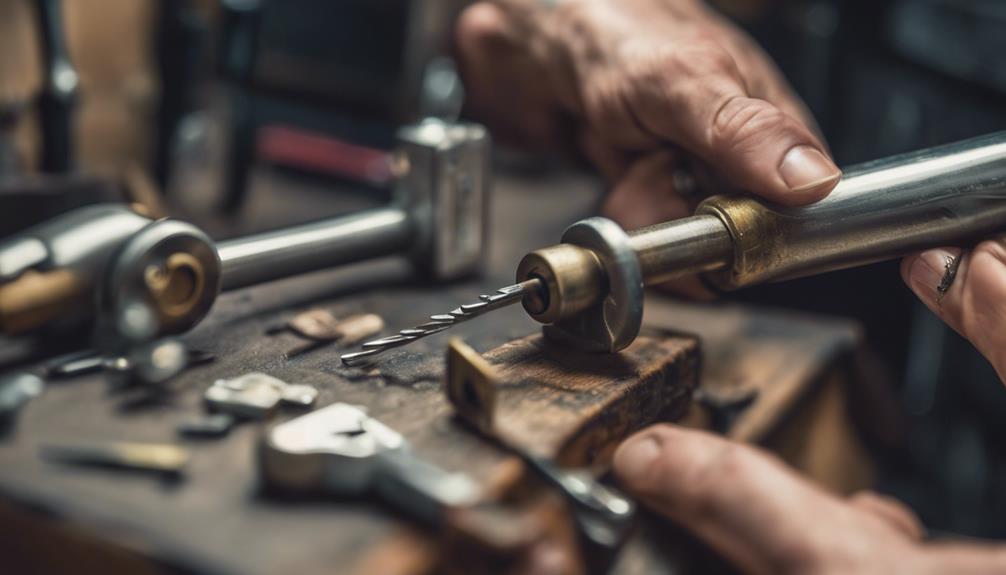
Mastering the use of a pick gun requires a methodical approach, starting with a clear step-by-step guide to guarantee precise execution. Avoiding common mistakes and refining your technique are essential for improving pick gun accuracy and efficiency. By experimenting with tension adjustments and trigger pulls, you can optimize performance and reliably open a variety of locks, particularly those with keyways like Quickset and Schlage.
Step-by-Step Guide to Using a Pick Gun
To effectively use a pick gun, it is essential to first understand the importance of holding it perpendicular to the keyway, as this position guarantees best performance and efficiency. Begin by inserting a tension wrench into the lock and applying light tension. As you press the trigger of the pick gun, practice varying the trigger pulls to discover the right technique for each specific lock. Adjust the tension wrench and trigger pressure in response to the lock’s feedback, ensuring delicate yet precise movements. Mastering the coordination and timing between the trigger and tension wrench is vital for successful lock picking. Through dedicated practice, you will develop a nuanced understanding of each lock’s unique characteristics, refining your skill with each attempt.
Common Mistakes to Avoid
Understanding the nuances of using a pick gun is only part of the equation; it’s equally important to recognize and avoid common mistakes that can undermine your efforts. Excessive tension on the lock can hinder the pick gun’s effectiveness, so apply just enough to feel the pins moving. Proper alignment of the pick gun needle with the lock pins is essential to prevent damage. Mastering trigger control is important to avoid jerky movements that disrupt pin bouncing. Patience and precision are crucial; rushing the process often leads to failure. Regular maintenance, including cleaning the pick gun needles, guarantees smooth operation and prevents jamming. By avoiding these pitfalls, your lock-picking endeavors will be more successful and efficient.
Tips for Improving Pick Gun Accuracy
Improving pick gun accuracy requires a thorough understanding of proper trigger control, tension adjustment, and the strategic use of different pick gun needles tailored to specific locks. Mastering trigger control guarantees that each stroke is deliberate and effective, minimizing unnecessary wear on the lock. The tension wrench must be finely adjusted to provide just the right amount of pressure, balancing between too loose and too tight for peak performance. Experimenting with various pick gun needles is essential to identify the most efficient one for the lock at hand. Additionally, mastering the raking technique can expedite the pick process. Regular maintenance and cleaning of the pick gun are paramount for consistent accuracy and functionality, ensuring your tool remains reliable.
Maintenance and Care for Your Pick Gun
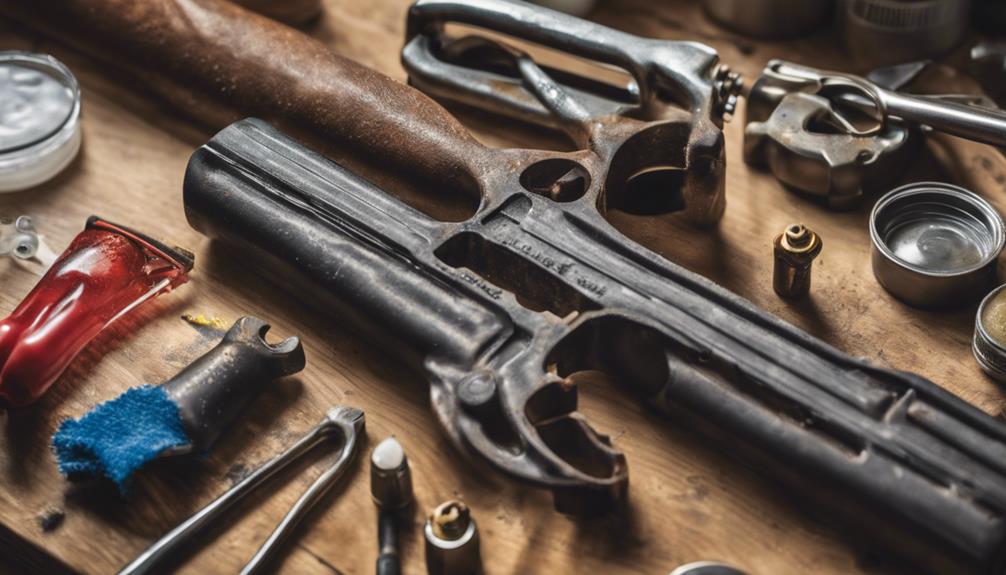
Ensuring your pick gun remains in peak condition involves several critical maintenance practices. Regular cleaning and lubrication of the needles and moving parts, combined with proper storage, will prevent debris buildup and mechanical wear. Additionally, troubleshooting common issues promptly can greatly prolong the lifespan and reliability of your tool.
Cleaning and Lubricating Your Pick Gun
Maintaining your pick gun in peak condition is essential, and this starts with regular cleaning using compressed air to expel debris and guarantee its longevity. A clean pick gun not only guarantees smooth operation but also prevents malfunctions that could impede your work. To maintain peak performance, use a lubricant specifically designed for lock pick guns, avoiding general lubricants like WD-40 that attract dirt and grime. This tailored approach prevents damage and enhances the tool’s efficacy. Always adhere to the manufacturer’s guidelines for cleaning and lubricating your pick gun. By doing so, you preserve its functionality and extend its service life, ensuring that it remains a reliable companion in your locksmithing endeavors.
Proper Storage Techniques
Proper storage techniques are essential for preserving the functionality and longevity of your pick gun, ensuring it remains an effective tool in your locksmithing toolkit. Store your pick gun in a dry, cool place to prevent rust and damage to its delicate mechanism. Utilizing a protective case or pouch can shield it from dust and debris buildup, which can compromise performance. Regular inspections and cleanings are vital for maintaining its peak functionality. Avoid exposing the tool to extreme temperatures or high humidity, as these conditions can lead to malfunction. By adhering to these storage practices, you extend the lifespan of your pick gun and maintain its reliability for all your lock picking tasks.
Troubleshooting Common Issues
When your pick gun encounters performance issues, a systematic approach to troubleshooting can swiftly identify and resolve common problems, ensuring it remains a reliable tool in your locksmithing arsenal. Regularly clean and lubricate your pick gun to prevent dirt buildup and maintain smooth operation. Check the alignment of the needle and tension tool, as proper contact with lock pins is vital. Inspect the needles for wear or damage, replacing them as necessary to preserve their effectiveness. Store your pick gun in a secure case or pouch to protect it from damage and prolong its lifespan. Practice proper handling and technique to avoid unnecessary strain on the components. By diligently maintaining your pick gun, you guarantee its longevity and reliability.
Legal and Ethical Considerations

Understanding the legal and ethical considerations surrounding pick guns is paramount for any professional locksmith. These tools, while invaluable, are subject to stringent regulations and require proper training and certification to guarantee responsible use. Adhering to these guidelines not only guarantees compliance with local laws but also upholds the integrity and trustworthiness of the locksmithing profession.
Understanding the Legal Implications of Using Pick Guns
Understanding the legal landscape surrounding pick guns requires a thorough comprehension of both jurisdiction-specific regulations and the ethical responsibilities tied to their use. Pick guns, primarily designed for professionals and law enforcement, are subject to varied legal restrictions across different regions. Responsible ownership mandates proper authorization and strict compliance with local laws. For locksmiths, this means obtaining the necessary licenses and ensuring their use aligns with legal requirements. Ethical considerations are paramount, ensuring that pick guns are utilized responsibly and only within the bounds of the law. Proper training is indispensable, equipping users with an in-depth understanding of both the tool and the legal implications, thereby fostering a responsible and lawful approach to locksmithing.
Ethical Use of Pick Guns in Locksmithing
In addition to maneuvering through the complex legal landscape, locksmiths must also adhere to high ethical standards to guarantee the responsible use of pick guns in their practice. Responsible ownership and proper authorization are paramount, ensuring compliance with local laws. Ethical considerations demand that locksmiths use pick guns only for lawful purposes, prioritizing non-destructive entry methods whenever possible. This approach not only prevents misuse or illegal activities but also upholds the integrity of the locksmithing profession. Understanding and abiding by these ethical and legal requirements ensures that pick guns are employed responsibly, aligning with the core principles of professional locksmith practices. This ethical framework fosters trust and reliability, essential in the locksmithing community.
Training and Certification Requirements
Mastering the use of pick guns necessitates thorough training and certification to guarantee locksmiths operate within legal and ethical boundaries. Certification programs are designed to guarantee practitioners possess the requisite skills and knowledge to use pick guns effectively and lawfully. These programs emphasize the importance of adhering to local regulations and responsible ownership, thereby promoting ethical conduct. Proper authorization is vital, as laws governing the use of pick guns can vary greatly by jurisdiction. By completing training, locksmiths not only enhance their technical abilities but also affirm their commitment to ethical standards. This dual focus ensures that locksmiths can utilize pick guns confidently, knowing they are compliant with all legal requirements.
Advanced Techniques and Applications
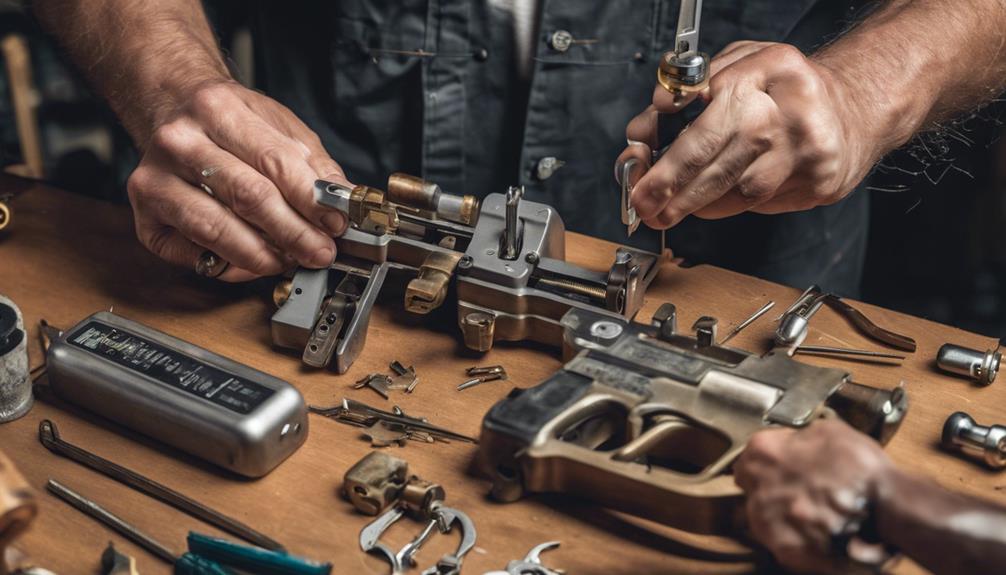
Mastering advanced pick gun techniques, such as precise trigger control and tension adjustment, is essential for locksmiths aiming to enhance their proficiency. These tools are invaluable in high-security lock situations, offering quick solutions in emergencies. Through detailed case studies and real-world applications, we will explore how skilled professionals leverage pick guns to effectively tackle complex locking mechanisms.
Mastering Advanced Pick Gun Techniques
Achieving proficiency in advanced pick gun techniques demands a deep understanding of lock mechanics and an exceptional level of dexterity. Mastery of tension control is paramount, as it allows locksmiths to manipulate lock pins with precision, ensuring the pick gun operates efficiently. Specialized pick gun models, equipped with features tailored for challenging keyways and intricate lock designs, become indispensable in the hands of a skilled user. Expertise in these advanced techniques enables the opening of high-security locks with finesse and accuracy, setting apart true masters of the craft. Such proficiency not only enhances a locksmith’s reputation but also expands their capability to tackle a broader range of locks, demonstrating unparalleled skill in the field.
Using Pick Guns in High-Security Lock Situations
Building upon the foundation of advanced pick gun techniques, locksmiths must hone their skills further to adeptly handle high-security lock situations, where precision and expertise are paramount. Specialized training is indispensable, as high-security locks present unique challenges that demand an intimate understanding of their intricacies. Utilizing pick guns in these scenarios requires not only precise timing but also skillful manipulation of lock pins. Often, pick guns are employed alongside other sophisticated tools to navigate the complex mechanisms of such locks. Mastery in these advanced techniques guarantees that locksmiths can maintain the delicate balance between force and finesse, ultimately achieving successful entry without compromising the integrity of the lock.
Case Studies and Real-World Applications
In the field of advanced locksmithing, real-world case studies illuminate how expert use of pick guns can efficiently bypass high-security locks, showcasing both the technical prowess and strategic application required for such feats. Mastery over trigger control and tension adjustments allows locksmiths to precisely manipulate pins, including security and spool pins, and navigate challenging keyways. These case studies reveal instances where pick guns have successfully opened complex master key systems without causing damage, reflecting a high level of finesse and skill. Such proficiency not only solves immediate security challenges but also enhances a locksmith’s reputation for efficiency and precision. The ability to consistently perform under these conditions underscores the invaluable role of advanced pick gun techniques in the trade.
Integrating Pick Guns with Other Locksmith Tools
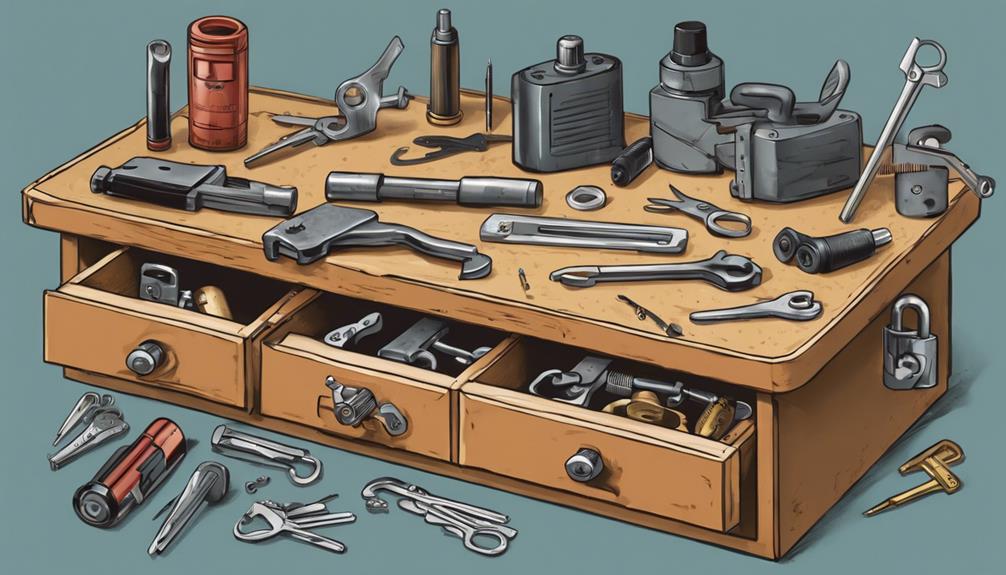
Integrating pick guns with other locksmith tools can greatly enhance both the efficiency and success rate of lock picking endeavors. Utilizing complementary tools such as tension wrenches, bump keys, and decoder tools allows locksmiths to tackle a broader variety of locks with greater precision. Proper training in these combined techniques is essential for maximizing the potential of each tool and ensuring thorough lock picking skills.
Complementary Tools for Lock Picking
Mastering the use of pick guns necessitates a synergistic approach with other locksmith tools to tackle a wide array of lock mechanisms effectively. Combining pick guns with tension wrenches allows for precise control over lock pins, ensuring a meticulous and calculated entry. The versatility of pick guns is further enhanced when used alongside rakes and hooks, enabling a broader range of lock picking techniques. Complex lock situations benefit markedly from supplementary tools like plug spinners, which complement pick guns seamlessly. Additionally, the utilization of interchangeable pick gun needles and blades promotes adaptability across various lock types. Integrating pick guns with decoding tools not only facilitates efficient entry but also deepens the locksmith’s understanding of lock mechanisms.
Enhancing Efficiency with Combined Techniques
To enhance the efficiency of lock picking, locksmiths often combine pick guns with complementary tools like tension wrenches, bump keys, and decoding instruments, thereby enabling a more versatile and effective approach to various lock mechanisms. This synergy allows for quicker and more reliable access, especially in complex scenarios. For instance, using a pick gun with a tension wrench provides precise control over the lock’s pins. Adding bump keys or raking tools can address a broader range of lock types, making the process smoother. Moreover, integrating pick guns with decoding tools can greatly expedite the opening of sophisticated locks. In cases involving broken keys, pairing pick guns with key extractors proves invaluable, showcasing the adaptability and prowess of a skilled locksmith.
Training for Comprehensive Lock Picking Skills
Thorough training in locksmithing emphasizes the seamless integration of pick guns with traditional tools, guaranteeing locksmiths are well-equipped to tackle a wide array of lock mechanisms efficiently and effectively. By mastering pick guns alongside manual techniques, locksmiths develop a versatile and all-encompassing skill set. Training modules often incorporate both methods to highlight the unique advantages and limitations of each tool. Understanding these nuances enhances problem-solving abilities and boosts confidence when facing different lock challenges. The synergy between pick guns and traditional tools not only improves effectiveness but also fosters a deeper appreciation for the art of lock picking. This holistic approach ensures practitioners can deliver professional, reliable services across diverse scenarios.
Conclusion

To conclude, lock pick guns remain essential tools in the locksmith’s toolkit, providing efficiency and flexibility for various types of locks. As technology advances, we expect further developments that will improve their accuracy and user-friendliness. It is crucial for professionals to use these tools responsibly, constantly refining their skills to maintain the highest standards of the profession.
Recap of Key Points
Lock pick guns, renowned for their efficiency in manipulating lock pins without manual turning, serve as indispensable tools for locksmiths tackling common locks such as Quickset and Schlage. These devices excel at bouncing pins, offering a swift and effective solution for many lock types. Essential for successful operation, tension adjustment guarantees precision and efficacy. Quality pick guns, sourced from reputable manufacturers, promise durability and versatility, essential for professional use. Although limitations may exist with certain keyways, the overall utility of pick guns cannot be overstated. Their ability to swiftly address common lock challenges makes them an important component of a locksmith’s toolkit, ensuring reliability and efficiency in various scenarios.
The Future of Pick Guns in Locksmithing
As the locksmithing industry continues to evolve with technological advancements, the future of pick guns appears promising, driven by ongoing innovations that enhance their efficiency and adaptability. Pick guns offer quick, non-destructive entry solutions, manipulating lock pins through controlled vibrations or kinetic energy. Quality models from reputable brands guarantee reliability and durability, essential for professional use. As technology progresses, we can anticipate further refinements in pick gun design, making them even more effective and user-friendly. Understanding the limitations and appropriate applications of these tools remains essential for successful locksmithing. The continuous improvement of pick guns underscores their indispensable role, aligning with the industry’s commitment to providing efficient, secure, and reliable services.
Encouraging Responsible and Skilled Use
Highlighting the significance of thorough training and ethical considerations, responsible use of pick guns guarantees that locksmiths can deliver efficient and non-destructive entry solutions. Mastery of pick guns, enabled through rigorous training, enhances precision and timing, pivotal for successful lock picking. Ethical locksmith practices emphasize non-destructive methods, ensuring minimal damage and maintaining the integrity of locks. Continuous practice is essential for developing the finesse required for expert use. Adherence to legal restrictions and obtaining proper authorization are paramount in promoting responsible use. By committing to these principles, locksmiths not only uphold the profession’s integrity but also provide exemplary service to clients, reflecting the true essence of skilled and conscientious locksmithing.
Frequently Asked Questions
Can Pick Guns Damage the Lock Mechanism?
When used correctly, pick guns do not damage lock mechanisms. These tools are crafted to manipulate pins without causing harm. However, incorrect use or excessive force may damage lock pins. Skilled locksmiths can operate pick guns effectively and safely. Regular maintenance and proper usage are essential in preventing any potential damage, ensuring that the lock remains functional and intact while the tool performs its intended task.
Are Pick Guns Effective on All Types of Locks?
While some might question the universal efficacy of pick guns, it is essential to acknowledge their impressive performance on pin tumbler locks found in most residential and commercial settings. Pick guns excel with standard keyways such as Quickset and Schlage. However, they encounter difficulties with more complex keyways like Y1, low profile European, and ASSA locks. Despite these limitations, pick guns remain a quick, efficient solution for many common lock types.
How Do I Store My Pick Gun Safely?
To store your pick gun safely, place it in a secure, locked toolbox or cabinet to prevent unauthorized access. Use a padded case or foam insert to protect it from damage. Keep it in a dry, temperature-controlled environment to maintain functionality. Designate a specific storage area to avoid misplacement. Regularly inspect and maintain the pick gun to make sure it remains in top working condition.
What Are the Differences Between Manual and Electric Pick Guns?
Manual pick guns necessitate manual triggering, offering affordability and portability, while electric pick guns utilize a motorized mechanism for faster and more consistent performance. Professionals handling multiple or complex locks often opt for electric variants due to their efficiency. Despite the differences in operation, both types demand skill and precision. The choice between them hinges on the user’s specific needs, balancing cost, portability, and ease of use against speed and consistency.
Can I Travel With a Pick Gun in My Luggage?
Carrying a pick gun while traveling can cause complications. Carefully consult airline regulations and TSA guidelines, as pick guns are often prohibited in carry-on luggage. Additionally, various countries have strict statutes regarding lock picking tools. Contact the airline or transportation authority for precise policies. Consider stowing pick guns securely in checked luggage to mitigate potential issues and guarantee a seamless travel experience.


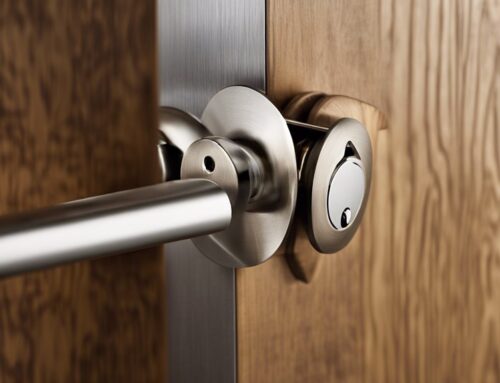

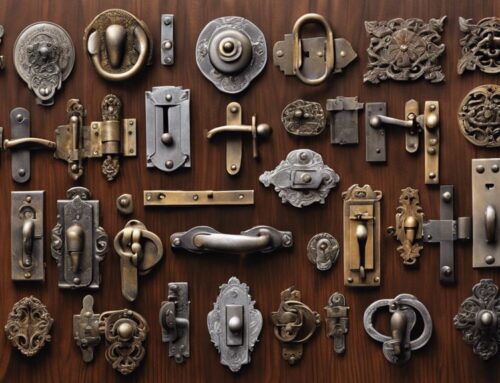
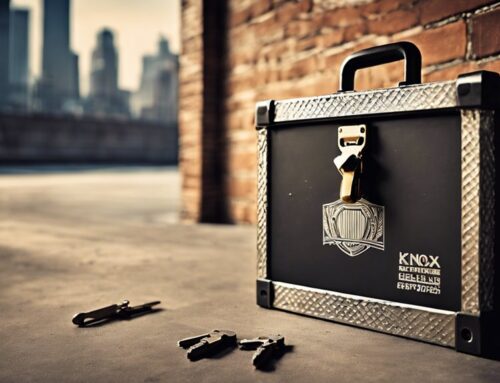


Leave A Comment